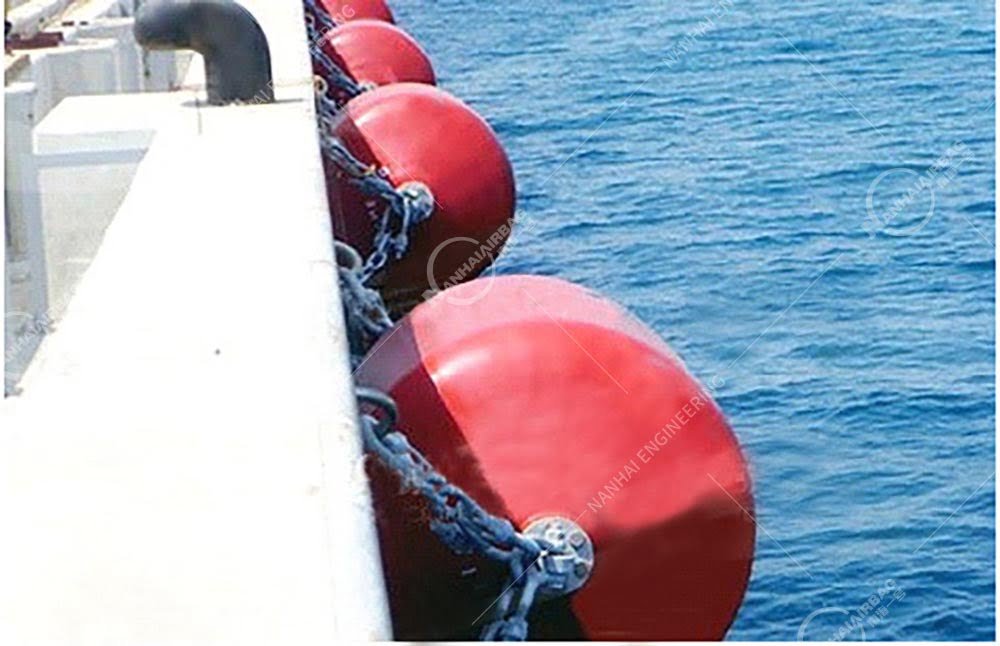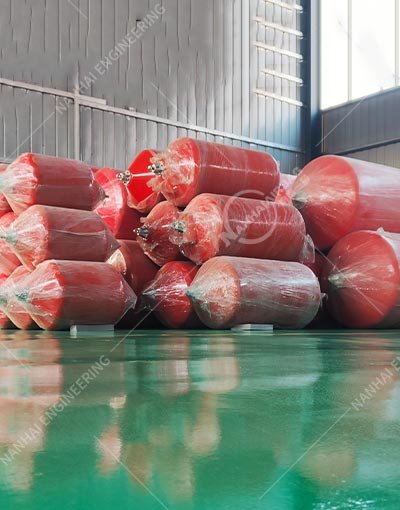Ship Launching Airbags: The Unsung Heroes of Smooth, Safe Vessel Launches
25/09/2025D-Rubber Fenders: The Unsung Heroes Saving Docks, Boats, and Your Bottom Line
07/10/2025

Ever watched a fishing boat slam into a metal dock and cringed? Or seen a cargo ship’s hull scuffed by a worn-out rubber fender at the marina? Those little “oops” moments add up—fast. A single collision can cost thousands in repairs, ruin a boat’s resale value, or even delay cargo shipments. That’s where foam fenders step in: the squishy, unassuming heroes of marine safety that turn rough encounters into gentle bumps. Let’s dive into why these foam workhorses are becoming the go-to for anyone who cares about their marine assets.
What Are Foam Fenders? (The Straight Scoop for Real Boaters & Marinas)
Foam fenders are impact-absorbing marine safety devices made from dense, closed-cell foam encased in tough rubber or polyurethane shells. They’re designed to take the hit when boats, docks, or barges collide—without cracking, rusting, or losing their shape. Think of them like a stress ball for your marine space: squeeze them (or let a ship bump into them), and they bounce right back, protecting whatever’s on the other side. Unlike rigid fenders, foam distributes force evenly, so there’s no sharp impact to damage hulls or docks.
Why This Matters Now: When a “Small” Collision Costs Big Bucks (And Headaches)
Let’s cut to the chase: Marine traffic is booming. More boats, bigger ships, and busier ports mean more chances for collisions. And if you’re relying on old metal or cracked rubber fenders? You’re sitting on a liability time bomb.Take my buddy Mike, who owns a small marina in Maine. Last summer, a tourist boat backed into his metal dock—crunch. The dock needed $3k in repairs, and the boat’s propeller was scratched. Mike was out the cash anda loyal customer who thought his marina was “unsafe.” Then he switched to foam fenders. Six months later? A lobster boat sideswiped a dock piling—no damage. “The foam just squished and absorbed it,” Mike said. “Now I don’t lose sleep over every wake or mistake.”Here’s why foam fenders are non-negotiable today:
- •Stop Costly Damage: Metal fenders dent, rubber cracks, and wooden pilings splinter. Foam? It takes the hit and stays intact. No more replacing fenders every season or fixing hull scrapes.
- •Save Time & Labor: Foam fenders require zero maintenance—no painting, no tightening bolts, no patching holes. Just install and forget (until you need them to save your dock).
- •Eco-Friendly Win: Closed-cell foam doesn’t leach chemicals, and most foam fenders are recyclable. Plus, they reduce the need for harsh cleaners or paints that harm marine life.
- •Work for AnySize: From 10-foot dinghies to 1,000-foot cargo ships—foam fenders come in sizes to match. Even tiny marinas can afford them.
How Do Foam Fenders Work? The Magic of Squish (Without the Mess)
Foam fenders aren’t just “soft”—they’re engineered for maximum protection. Here’s the science behind their squish:
1. Closed-Cell Foam = Impact Absorption
The inside of a foam fender is made of millions of tiny, air-filled cells. When hit, these cells compress, absorbing the energy of the collision instead of transferring it to the dock or boat. It’s like jumping on a memory foam mattress—gentle, not jarring.
2. Durable Shell = Longevity
The foam is wrapped in thick rubber or polyurethane. This keeps water out (no soggy, heavy fenders!) and prevents tears from rocks, ropes, or sharp edges. Top brands say their fenders last 5–10 years—even in harsh saltwater.
3. Versatile Shapes = Fit Any Space
You don’t need a custom dock to use foam fenders. They come in cylindrical, rectangular, or even “wing” shapes to fit tight spaces, piers, or mooring buoys. Some even float—perfect for temporary setups or anchorages.
Foam Fenders vs. Old-School Options: Why They’re a No-Brainer Upgrade
Let’s compare foam fenders to the “usual suspects” to see why they win:
1. vs. Metal Fenders
Metal is strong—but it’s also heavy, rust-prone, and unforgiving. A collision with metal can dent a boat’s hull or scratch a dock’s finish. Foam? It yields, so no damage. Plus, metal fenders need annual painting to fight rust—foam doesn’t.
2. vs. Rubber Fenders
Rubber fenders are better than metal, but they harden over time (especially in UV light) and can crack under heavy impact. Foam stays flexible forever, absorbs more energy per pound, and won’t split if a rope snags it. And hey—if you already use rubber fenders, foam is a great backup for high-traffic areas.
3. vs. Wooden Bumpers
Wood rots, splinters, and needs constant upkeep. Foam is waterproof, rot-proof, and won’t splinter into dangerous pieces. Plus, wood is heavy—foam is lightweight, so you can move it around easily.
People Also Ask: Your Foam Fender Questions, Answered
We get these all the time—let’s clear things up:Q: How do foam marine fenders differ from rubber fenders?A: Foam absorbs impact via compressed air cells (gentler, more flexible), while rubber relies on its material density (firmer, prone to hardening). Foam lasts longer in UV/saltwater and needs zero maintenance—rubber needs regular upkeep.Q: Are foam fenders good for small boats?A: Perfect for them!They’re lightweight, won’t damage a dinghy’s hull, and fit small docks or moorings. Even kayaks can bump into them safely.Q: How long do foam fenders last?A: With proper care (rinse salt off occasionally), most last 5–10 years. Some brands offer warranties up to 8 years—try getting that with rubber or metal.Q: Do foam fenders need maintenance?A: Nope!No painting, no tightening, no patching. Just hose them down if they get dirty. That’s it.Q: Can I use foam fenders in saltwater?A: Absolutely!Closed-cell foam doesn’t absorb water, and the outer shell is designed to resist salt corrosion. Perfect for coastal marinas or offshore rigs.Q: Are marine airbags better than foam fenders?A: They serve different purposes!Marine airbags are for launching ships (buoyancy + guidance). Foam fenders are for protectingboats/docks from collisions. You might use both—but they’re not interchangeable.Q: Are foam fenders eco-friendly?A: Yes!Closed-cell foam is non-toxic, recyclable, and doesn’t leach chemicals. Many brands use recycled materials too—win for the planet and your wallet.
Final Thoughts: Stop Replacing, Start Protecting
If you’re tired of fixing docks, repairing boats, or stressing about collisions, foam fenders are your answer. They’re affordable, low-maintenance, and built to last—exactly what every marina, boat owner, or port operator needs in today’s busy marine world.Don’t wait for the next “oops” moment. Swap your old fenders for foam, and watch your stress (and repair bills) disappear. Your dock, your boat, and your wallet will thank you.Keywords: marine airbags, marine fenders, rubber fendersP.S. Still not sure? Ask a local marina—they’ll tell you foam fenders are the best upgrade they ever made. Trust us on this one.
